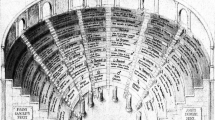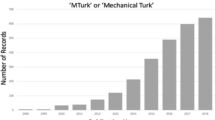Abstract
Various kinds of touch panel displays are becoming readily available for implementing futuristic human computer interaction (HCI) methods and are proven to be a useful infrastructure for inventing intuitive HCI environments. In spite of their popularity, there are some drawbacks. The most serious one is their hardness to operate especially for the weak in information technology such as elderly and blind users. A tactile feedback function has a potential ability for enabling them to make full use of the devices. We propose an approach for effectively designing user-friendly HCI environments based on the tactile feedback. We exemplify our approach through the design and development of a practical application, a haptic web browsing system. It allows even the weak users to intuitively explore various web pages without heavily depending on the visual information. While the system targets at supporting the weak, the touch interactions are quite useful means for general users to improve the stability and the degree of satisfaction in web browsing operations. The proposed system uses a touch panel haptic display for helping the users to operate with intuitive touch sensations.














Similar content being viewed by others
References
Aoki E, Hirooka J, Nagatomo N, Osada T, Nishino H, Utsumiya K (2011) Significance of haptization in multilateral information. In: Proceedings of 2011 international conference on mechanical, industrial, and, manufacturing engineering, pp 305–308, January 2011
Brewster SA, Chohan F, Brown L (2007) Tactile feedback for mobile interactions. In: Proceedings of ACM CHI2007, pp 159–162, 28 April–3 May 2007
Hoggan E, Brewster SA, Johnson J (2008) Investigating the effectiveness of tactile feedback for mobile touchscreens. In: Proceedings of ACM CHI2008, pp 1573–1582, April 2008
Immersion Corporation (2011) http://www.immersion.com/
Kaklanis N, Tzovaras D, Moustakas K (2009) Haptic navigation in the world wide web. Universal access in HCI, Springer LNCS 5616:707–715
Koskinen E, Kaaresoja T, Laitinen P (2008) Feel-good touch: finding the most pleasant tactile feedback for a mobile touch screen button. In: Proceedings of ACM ICMI’08, pp 297–304, October 2008
Kyung K-U, Lee J-Y, Srinivasan MA (2009) Precise manipulation of GUI on a touch screen with haptic cues. In: Proceedings on the 3rd joint eurohaptics symposium and symposium on haptic interfaces for virtual environment and teleoperator systems, pp 202–207, March 2009
Nishino H, Goto R, Motoji M, Fukakusa Y, Kagawa T, Utsumiya K (2009) Design support tools for developing 3D haptic applications. In: Proceedings of the 2nd international conference on computer science and its applications (CSA-2009), pp 708–713, December 2009
Nishino H, Goto R, Kagawa T, Utsumiya K, Hirooka J, Aoki E, Osada T, Nagatomo N (2011) A touch screen interface design with tactile feedback. In: Proceedings of the 5th international conference on complex, intelligent and software intensive systems, pp 53–60, 30 June–2 July 2011
Nishino H, Murayama K, Shuto K, Kagawa T, Utsumiya K (2011) A calligraphy training system based on skill acquisition through haptization. J Ambient Intell Humaniz Comput 2(4):271–284
Nishino H, Fukakusa Y, Hatano A, Kagawa T, Utsumiya K (2012) A tangible information explorer using vibratory touch screen. In: Proceedings of the IEEE 26th international conference on advanced information networking and applications (AINA2012), pp 671–677, 26–29 March 2012
Nishino H, Goto R, Fukakusa Y, Lin J, Kagawa T, Yoshida K, Utsumiya K, Hirooka J, Osada T, Nagatomo N, Aoki E (2012) A touch screen interface design with tactile feedback for practical applications. Int J Space-Based Situated Comput (in press)
Ouchi Y, Nishino H, Kagawa T, Utsumiya K (2012) A tangible 3D desktop environment with force feedback. J Mob Multimed 8(2):114–131
Rotard M, Knödler S, Ertl T (2005) A tactile web browser for visually disabled. In: Proceedings of the 6th ACM conference on hypertext and hypermedia (HT’05), pp 15–22, September 2005
Shuto K, Nishino H, Kagawa T, Utsumiya K (2009) A handwritten character training system with haptization of instructor’s brush-strokes. In: Proceedings of the 5th international conference on complex, intelligent and software intensive systems, pp 1030–1035, March 2009
Vaughan Nichols SJ (2007) New interfaces at the touch of a fingertip. IEEE Comput 40(8):12–15
Yu W, Kuber R, Murphy E, Strain P, McAllister G (2006) A novel multimodal interface for improving visually impaired people’s web accessibility. Virtual Real 9(2–3):133–148
Author information
Authors and Affiliations
Corresponding author
Rights and permissions
About this article
Cite this article
Nishino, H., Fukakusa, Y., Kagawa, T. et al. A tangible information explorer using vibratory touch screen. Computing 95, 1053–1071 (2013). https://doi.org/10.1007/s00607-012-0226-8
Received:
Accepted:
Published:
Issue Date:
DOI: https://doi.org/10.1007/s00607-012-0226-8
Keywords
- Touch panel display
- Tactile feedback
- Web browsing
- Graphical user interface
- Assistive information technology




